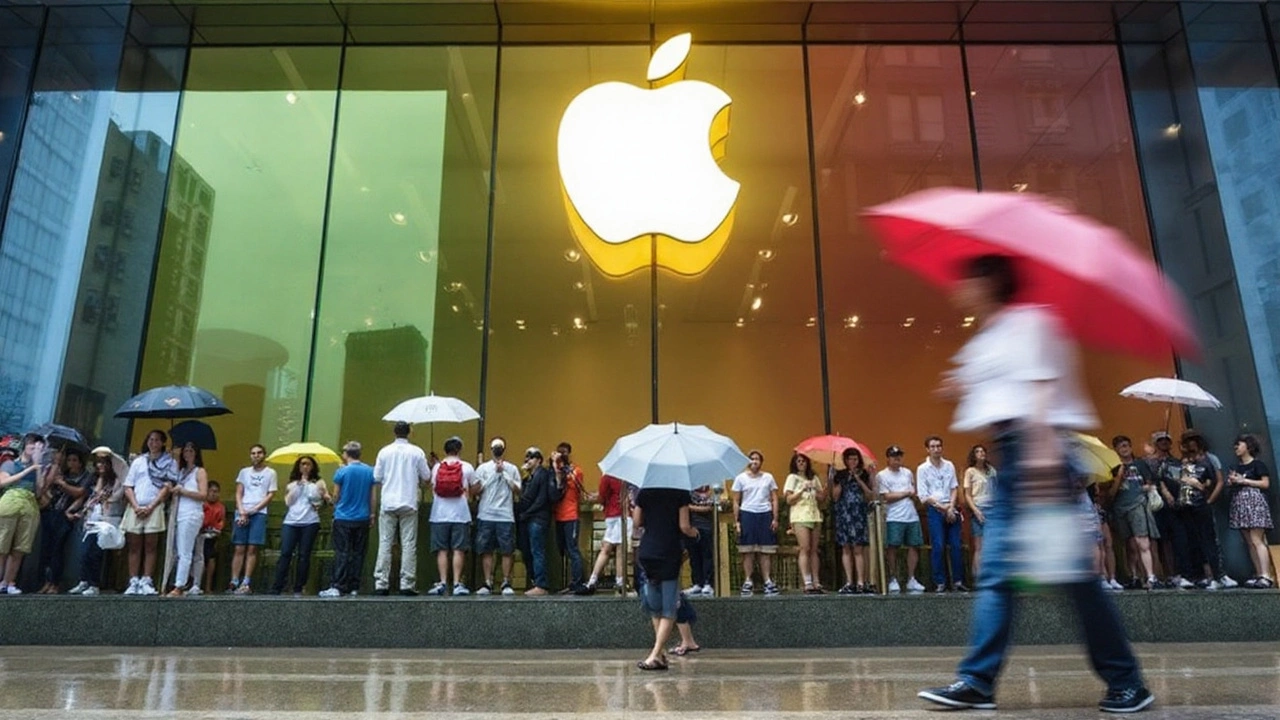Stocks soar while bonds blink: rate-cut hopes overpower growth worries
Stocks and bonds sent a mixed message, and Wall Street loved it anyway. The Dow, S&P 500, and Nasdaq all closed at record highs on Tuesday as traders leaned into bets on a Federal Reserve rate cut next week. The kicker? Bond yields rose at the same time, a sign investors still see decent growth on the other side of any policy move.
The rally had a clear spark: a big downward revision to U.S. employment. Government data signaled the country had 911,000 fewer jobs through March than previously thought. That’s a meaningful miss, and it was enough to shift the policy conversation from how long the Fed might hold rates to how soon it might start easing.
Here’s the scoreboard from Tuesday’s close:
- Dow Jones Industrial Average: +196 points (+0.4%)
- S&P 500: +0.3%, topping last week’s record
- Nasdaq Composite: +0.4%
- 10-year Treasury yield: 4.08%, up from 4.05% on Monday
Why do weaker jobs push stocks higher? Because the Fed’s job is to balance inflation with employment. A softer labor market lowers the risk of wage-driven inflation and gives policymakers room to cut rates. If the Fed signals it’s ready to ease, borrowing costs fall, price-to-earnings multiples often expand, and growth-sensitive stocks usually get a tailwind.
This wasn’t just any revision. The annual benchmarking process often tweaks the employment tally, but a 911,000-job adjustment is large by recent standards. It suggests the post-pandemic cooling in hiring has been sharper than it looked in headline numbers. For companies, that can mean more caution on hiring and capex. For the Fed, it’s a nudge to prevent a slowdown from gathering speed.
Layer on tariffs rolled out in April, and the picture gets more complicated. Tariffs tend to raise input costs, especially for goods with complex global supply chains. Companies either eat those costs or pass them on to consumers. That can look inflationary in the short run, even as growth takes a hit. It’s the classic policy dilemma: inflation risk one way, demand weakness the other. Right now, Wall Street is betting the Fed sees the demand side as the bigger issue.
Put simply, investors want a “just-right” slowdown — cool enough to unlock a rate cut, not cold enough to tip into recession. Tuesday’s action said that hope is alive. Rate-sensitive pockets of the market — think housing-adjacent names, parts of consumer discretionary, and some tech — tended to hold up well. More defensive areas didn’t lag as much as you’d expect when indexes make new highs, which hints at an undercurrent of caution.
So why did the 10-year yield tick higher if cuts are coming? Two reasons make sense. First, rate cuts can support growth and earnings, which can lift real yields even as policy rates edge down. Second, there’s the supply and term-premium story: more Treasury issuance and uncertainty about inflation can keep long-end yields sticky. Neither dynamic contradicts the equity rally; they just show bonds reacting to a slightly different set of risks.
The equity setup also reflects how investors are gaming the path of cuts. Futures and swaps markets are leaning toward a quarter-point move next week, with some odds of a larger step if the Fed wants to send a clear signal. The tone of the statement and the projections will matter as much as the size. A cut paired with cautious language could temper the rally; a cut with a softer inflation outlook could extend it.
Under the surface, the jobs revision was the day’s swing factor. A weaker-than-assumed labor market can slow wage growth, cool services inflation, and take pressure off the Fed. But it can also soften consumer spending if layoffs pick up and hiring freezes spread. That’s the fine line for policymakers: ease early enough to protect demand, but not so early they reignite price pressures, especially with tariff pass-through still working through supply chains.

What to watch: the Fed’s message, tariff pass-through, and the global backdrop
All eyes are on next week’s Fed meeting. The market wants three things: a cut, a path, and a tone. The cut is the headline. The path — how many moves the Fed sees over the next few meetings — sets the medium-term risk appetite. The tone — how the Fed frames growth and inflation — will steer sector rotation. If officials lean into labor-market weakness and acknowledge tighter financial conditions earlier in the year, that opens the door to more than a one-and-done.
Tariffs stay in the frame. Businesses are still working out how to price goods under the new cost structure, and the timing of pass-through is uneven across industries. Big-box retailers, hardware makers, and electronics suppliers typically move in waves: test price hikes, watch demand, adjust. That staggered approach can blur inflation trends for a few months, making the Fed’s read tricky. The more uncertainty around pass-through, the more the Fed may prefer to move in smaller steps and reassess.
Internationally, the picture was mixed. Japan’s Nikkei 225 slipped 0.4% after Prime Minister Shigeru Ishiba said he plans to step down, creating a leadership vacuum that could take weeks to fill. Political flux often slows decision-making on budgets and reforms, and markets hate waiting. Europe was uneven as well, with investors there juggling the same growth-versus-inflation trade-off that’s driving U.S. positioning.
For U.S. investors, the global angle matters for two reasons. First, currency moves can amplify or mute tariff effects. If the dollar strengthens, import prices can stabilize even with tariffs; if it weakens, the opposite can happen. Second, global growth sets the tone for U.S. multinationals’ revenue pipelines. Mixed signals abroad fit the “soft landing” narrative at home: decent demand, but no boom.
Back in bonds, the yield move felt like a reset, not a panic. A small rise in the 10-year alongside record equities says investors are betting the Fed can ease without losing control of inflation. If yields keep creeping up while policy rates fall, that’s a mild steepening — usually friendlier to banks and cyclicals. If yields slip on weak data, rate-sensitive growth stocks could reassert leadership. Either path can co-exist with a soft-landing story, just with different sector winners.
What could derail it? A few obvious risks. A hotter stretch in services inflation would put the Fed back on alert. A faster deterioration in hiring would turn a mild slowdown into a hard one. And a messy tariff pass-through could sap margins while keeping consumer prices sticky. None of those showed up in Tuesday’s close, but they’re the risks traders are hedging around.
For now, the market’s message is straightforward. The jobs revision pulled forward the easing timeline. The tariff shock keeps the inflation debate alive, but not dominant. And the equity tape says investors think the Fed can thread the needle — take some pressure off the economy without lighting a new inflation fuse. Next week’s meeting will test that read and set the pace for the rest of the quarter.
Until then, watch the usual tells: company guidance on hiring and pricing, any signs of discounting at retailers, and how credit markets react to fresh issuance. Those are the early signals for whether this record run has a real base — or whether it’s leaning too hard on hope for policy help.
